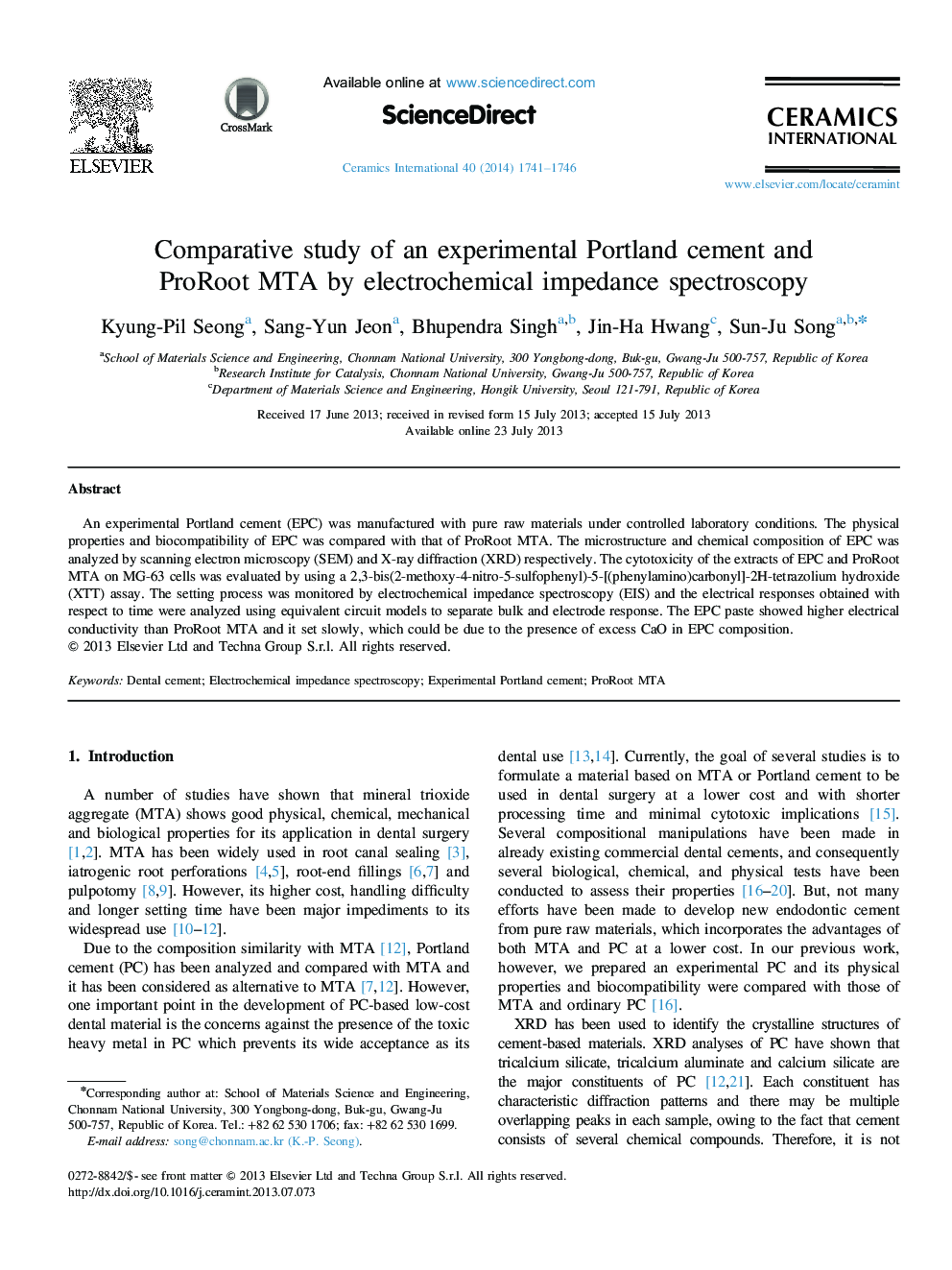| Article ID | Journal | Published Year | Pages | File Type |
|---|---|---|---|---|
| 1461867 | Ceramics International | 2014 | 6 Pages |
An experimental Portland cement (EPC) was manufactured with pure raw materials under controlled laboratory conditions. The physical properties and biocompatibility of EPC was compared with that of ProRoot MTA. The microstructure and chemical composition of EPC was analyzed by scanning electron microscopy (SEM) and X-ray diffraction (XRD) respectively. The cytotoxicity of the extracts of EPC and ProRoot MTA on MG-63 cells was evaluated by using a 2,3-bis(2-methoxy-4-nitro-5-sulfophenyl)-5-[(phenylamino)carbonyl]-2H-tetrazolium hydroxide (XTT) assay. The setting process was monitored by electrochemical impedance spectroscopy (EIS) and the electrical responses obtained with respect to time were analyzed using equivalent circuit models to separate bulk and electrode response. The EPC paste showed higher electrical conductivity than ProRoot MTA and it set slowly, which could be due to the presence of excess CaO in EPC composition.
